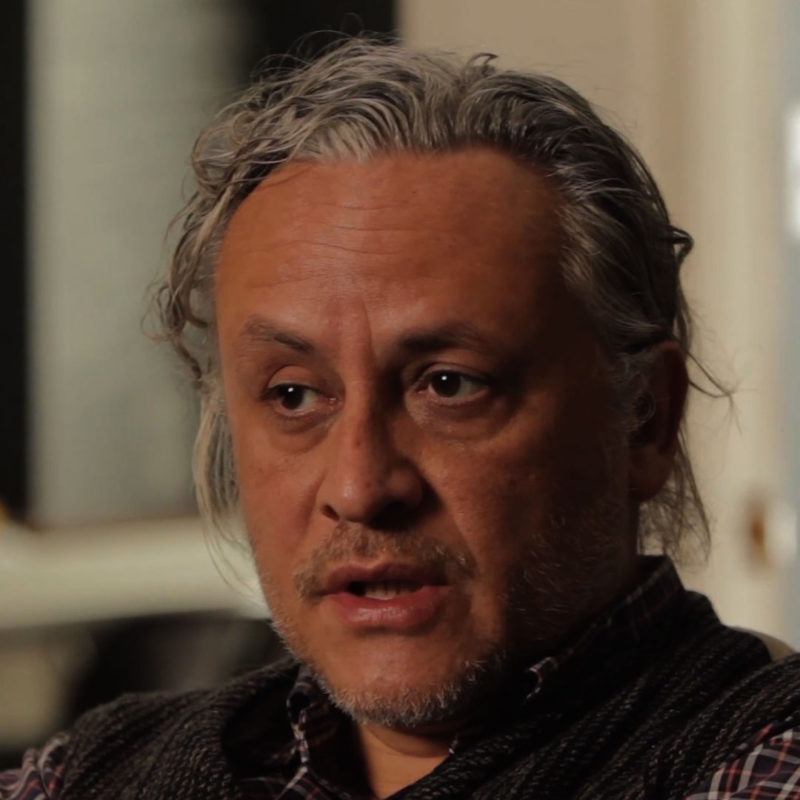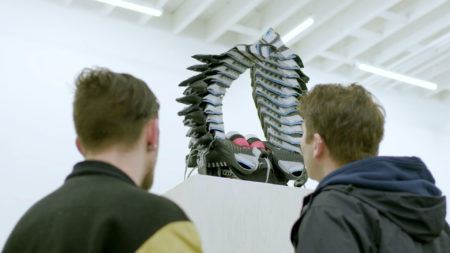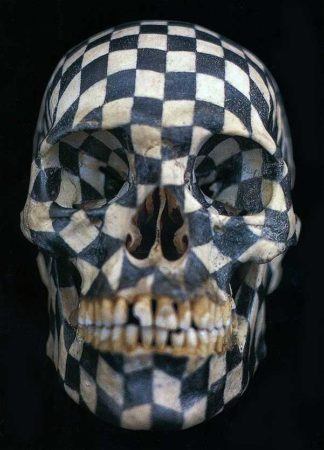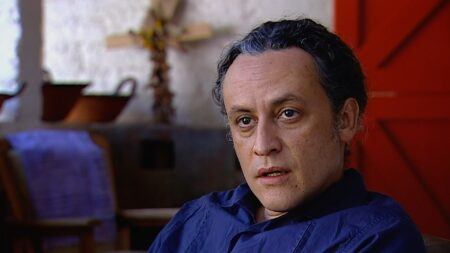Continue playing
(Time remaining: )
Play from beginning
Continue playing "{{ controller.videos[controller.getVideo(controller.currentVideo)].segmentParentTitle}}"
{{controller.videos[controller.getVideo(controller.currentVideo)].title}} has ended.
"Mobile Matrix"Gabriel Orozco
On February 8, 2006, the remains of a beached whale were preserved by a team of specialists who, after obtaining permission from the Mexican authorities, extracted the natural oils from the skeleton’s bones. The next phase of the whale’s afterlife was a repurposing by artist Gabriel Orozco, who restructured the skeleton’s bones onto a metal armature, and deemed it an artwork to be hung in the central lobby of Mexico’s national library. Entitled Mobile Matrix, the whale has remained on permanent display at la Biblioteca José Vasconcelos in Mexico City, with the exception of an excursion to MoMA for Orozco’s 2009 retrospective.
Six thousand pencils were employed by assistants under Orozco’s supervision to create the concentric circles on the skeleton’s 163 bones.
“In the end, it was a lot of labor to fill it with graphite,” Orozco admits, “and I like the graphite because it’s like lead. It has certain qualities that aren’t like painting on the bone, it’s more like dust. I always liked the idea of this dark mineral against the bone, how they contrast.”
Credits
Producer: Wesley Miller and Sofía Olascoaga. Camera & Sound: J. Manuel Bravo Arriola and Larissa Nikola-Lisa. Editor: Mary Ann Toman. Artwork Courtesy: Gabriel Orozco. Thanks: Biblioteca José Vasconcelos, Mexico City; Kurimanzutto, Mexico City; Marco Barrera Bassols; and Marian Goodman Gallery, New York.
Closed captionsAvailable in English, German, Romanian, Italian, Japanese, Korean, Chinese, Italian
Through the Art21 Translation Project, multilingual audiences from around the globe can contribute translations, making Art21 films more accessible worldwide. Translate this video now.
Interested in showing this film in an exhibition or public screening? To license this video please visit Licensing & Reproduction.
Gabriel Orozco uses the urban landscape and the everyday objects found within it to twist conventional notions of reality and engage the imagination of the viewer. Orozco’s interest in complex geometry and mapping find expression in works like the patterned human skull of Black Kites, and the curvilinear logic of Oval Billiard Table. He considers philosophical problems, such as the concept of infinity, and evokes them in humble moments. Matching his passion for political engagement with the poetry of chance encounters, Orozco’s photographs, sculptures, and installations propose a distinctive model for the ways in which artists can affect the world with their work.
Animals & Art
Diana Thater
Artwork Survey: 2000s
Gabriel Orozco
Gabriel Orozco





